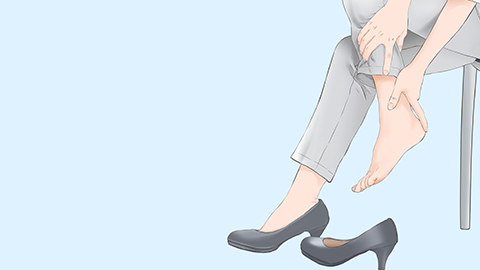What causes foot pain in women from ankle sprains?
Generally, foot ankle sprain pain in women may be caused by improper exercise posture, uneven force distribution from wearing high heels, ankle ligament injury, ankle fracture, or traumatic arthritis. It is recommended to seek medical attention promptly, identify the underlying cause, and receive symptomatic treatment under a doctor's guidance. Specific analyses are as follows:

1. Improper exercise posture: Sudden jumping, turning, or stepping into empty space during exercise can lead to instantaneous imbalance of force on the ankle joint, making ankle sprains more likely. Adequate warm-up before exercise, choosing flat surfaces for physical activity, maintaining focus during movement, and avoiding sudden exertion are important preventive measures. Once a sprain occurs, stop exercising immediately and apply an ice pack to reduce pain.
2. Uneven force distribution from wearing high heels: High heels place the ankle in a forward-tilted position, reducing the stability of the ankle joint while walking, increasing the risk of sprains. It is advisable to minimize the frequency of wearing high heels in daily life, opt for shoes with heels no higher than 3 cm, walk slowly when wearing high heels, and avoid walking on uneven surfaces.
3. Ankle ligament injury: During an ankle sprain, ligaments may be overstretched or torn, resulting in significant pain accompanied by swelling and limited mobility of the ankle joint. Patients may follow medical advice to use medications such as ibuprofen sustained-release capsules, diclofenac sodium enteric-coated tablets, or Yunnan Baiyao aerosol to relieve pain and swelling. Additionally, wearing an ankle brace helps immobilize the joint and prevent further ligament damage.
4. Ankle fracture: Excessive external force during a sprain may cause a break in the ankle bone, leading to severe pain, local deformity, and inability to bear weight. Immediate immobilization is required, and the ankle should be stabilized with a splint. In severe cases, open reduction and internal fixation surgery may be necessary to restore the normal anatomical structure of the bone.
5. Traumatic arthritis: Previous ankle sprains that did not fully heal can result in repeated damage to the ankle cartilage, predisposing individuals to traumatic arthritis. Subsequent sprains may cause intensified pain along with joint stiffness. Under medical guidance, patients may use medications such as celecoxib capsules, etoricoxib tablets, or hydrochloride amino glucose capsules to reduce inflammation and improve joint function. In severe cases, ankle arthrodesis (fusion) surgery may be needed to alleviate pain and restore joint stability.
Daily strengthening exercises for muscles around the ankle joint—such as toe raises and ankle circles—can enhance joint stability. During recovery from a sprain, avoid bearing weight too early and gradually increase ankle joint activity to promote healing.




